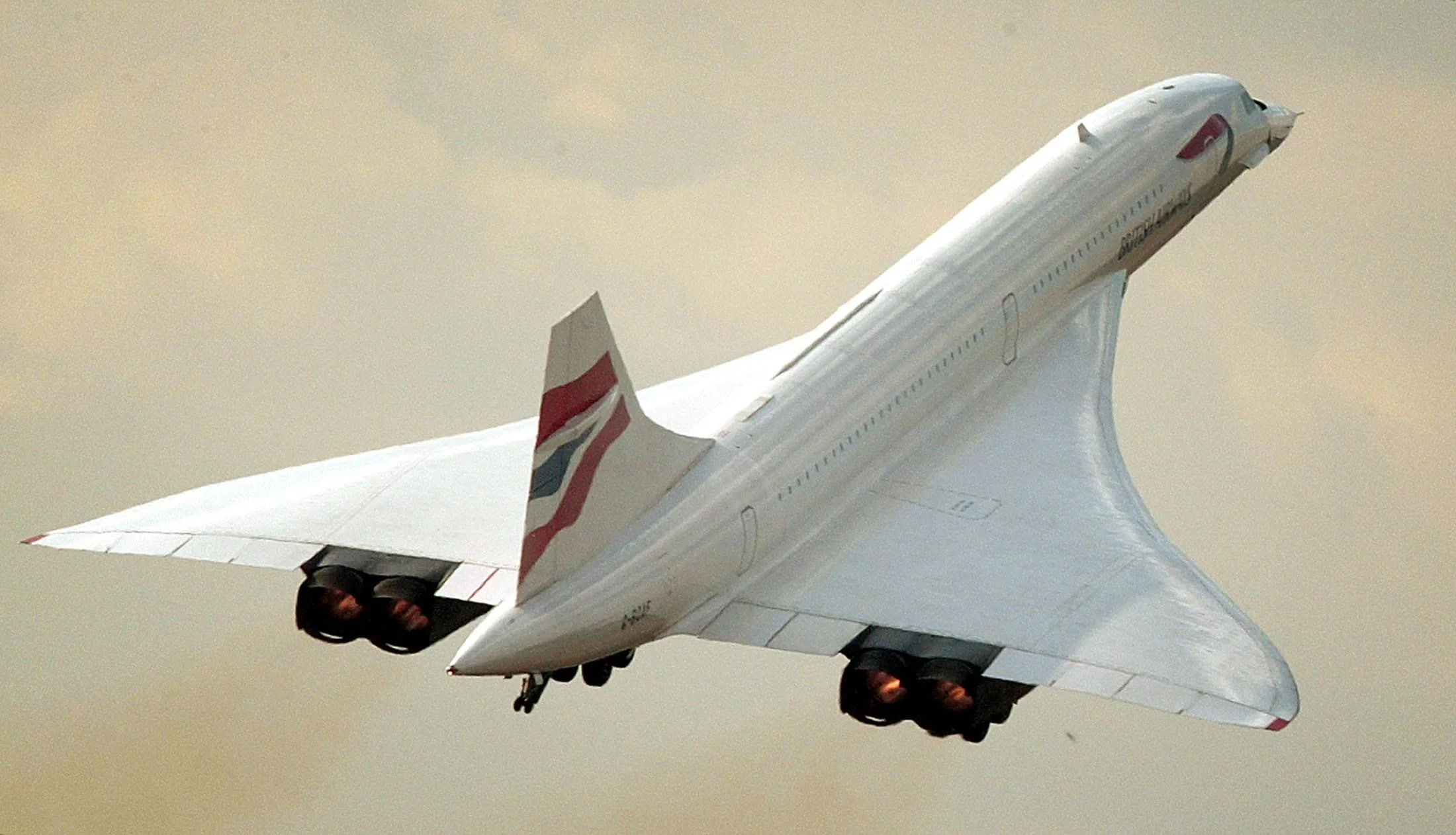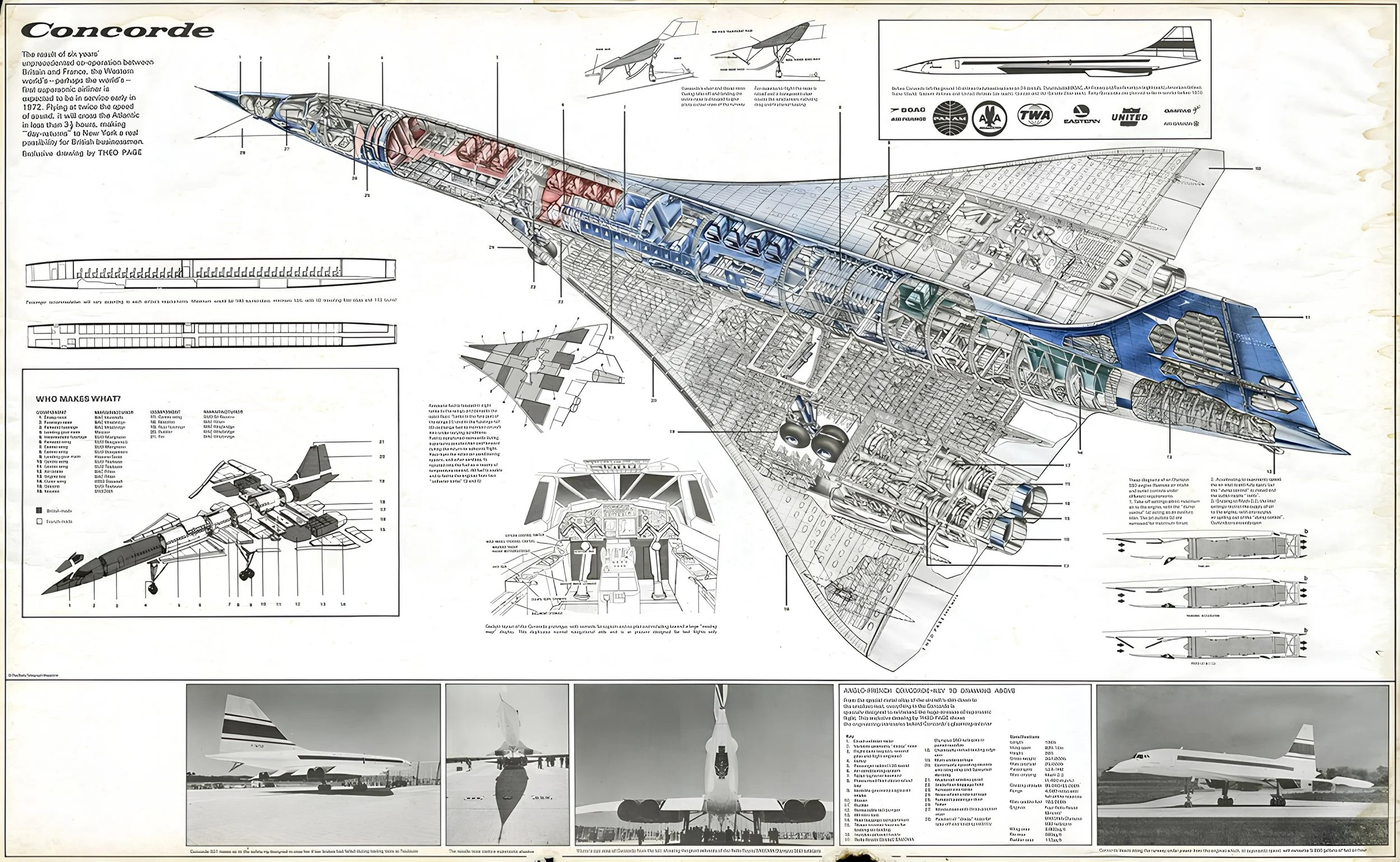
Breaking Societal Barriers Just As Concorde Broke the Sound Barrier
Is Our Mission
It’s a shame that while airplanes are given female pronouns, they are mostly designed, built, and flown by men.
In the grand narrative of aviation, few moments have captured the world's imagination as intensely as the Concorde shattering the sound barrier. Concorde, meaning “unity” in French, is a literal emblem of the audacious goal the British and French governments achieved by developing the jet in the 1960s. This partnership between the United Kingdom and France eventually formed the company known today as Airbus. The powerful sonic boom produced when surpassing the sound barrier was not merely a testament to human ingenuity and technological prowess but a profound statement of breaking through seemingly insurmountable obstacles. The same spirit that fueled the Concorde's historic flights transporting passengers from New York to London in three hours instead of six on subsonic jets propels our endeavors to change societal norms, disproving what once was impossible. The Concorde’s ability to fly at supersonic speeds surpassing Mach 1 is a historical touchstone and a deep-seated inspiration to our scholarship’s name. The plane is also vividly embodied and honored in our company logo. The Concorde's silhouette, juxtaposed with a pencil fuselage in our organization’s emblem, mirrors our mission – to transcend limits and forge a path where women, too, can redefine aerospace's horizons through educational pursuit. Our organization thrives on the principles of innovation, courage, and determination. Just as the Concorde roared beyond Mach 1, shattering the sound barrier and rewriting aviation history, our charity is poised to break the oppressive barriers of gender inequality.
Much like the Concorde symbolized a leap into the future, our mission at Mach One represents the future of an inclusive, vibrant, and innovative aerospace industry. Our organization aspires to make every woman's dream in the industry an attainable, celebrated reality. We hope to usher in an era where every dream has wings, and every ambition has a clear sky. Our objective is as clear as the skies the Concorde once dominated: We aim to amplify the voices, dreams, and potential of women in aerospace to ensure they're not just passengers but active contributors steering the trajectory of this dynamic sector.
Take a look at the absolutely incredible engineering behind Concorde’s ability to fly supersonic.
Ogive Delta Wing Design
Concorde featured an ogival delta wing configuration, a design characterized by a double-curved profile when viewed from above. This design allowed the Concorde to maintain stable and controlled flight at high speeds, especially at the supersonic speeds it could achieve. However, this wing configuration made controlling the aircraft at lower speeds difficult. This meant that Concorde typically landed around 40 knots faster than subsonic jets to maintain maneuverability when descending on approach to an airport and lining up with the runway for landing.
Concorde’s wing design also differed from other aircraft in that the jet lacked a horizontal stabilizer. This stabilizer is wing-like in design and houses the elevators, which are responsible for pitch control. The horizontal stabilizer and elevators are commonly found under the rudder in the tail section of most airplanes. However, Concorde maintained pitch and roll using an “elevon.” An elevon is a combination of the words elevator (which controls pitch) and aileron (which controls roll), and it essentially combines the functionalities of these two control surfaces into one. On Concorde, the elevons were situated along the trailing edge of the delta wings. Encased in the wings also included the landing gear and 17 massive fuel tanks that are both observable in the top image on the left. The combination of roll and pitch controls on a single surface meant that inputs for controlling pitch might affect roll control and vice versa. This made Concorde more challenging to control, especially during complex maneuvers or in turbulent conditions. The combination of the difficulties associated with using an elevon, and landing at a higher and more dangerous speed compared to subsonic jets, are two reasons why only experienced pilots were chosen to fly Concorde.
Turbojet Engines on a Passenger Aircraft
Concorde used four Rolls-Royce/Snecma Olympus 593 turbojet engines, with two located under each wing. Turbojet engines, which include the likes used in the Concorde, are characterized by their high-thrust and high-speed capabilities, often incorporating afterburners to inject additional fuel into the exhaust stream for extra thrust during supersonic flight. These engines are primarily used on fighter jets and are rarely used on commercial aircraft. In contrast, turbofan engines, commonly found in subsonic commercial airliners, have an additional fan at the front that helps bypass air around the core, offering better fuel efficiency and quieter operation, but generally do not feature afterburners as they are optimized for subsonic speeds. The choice between the two engine types for an aircraft manufacturer hinges on the specific performance requirements of an aircraft, with turbojets being favored for high-speed applications such as in the case of Concorde. This was especially critical for the added thrust needed during Concorde’s takeoff at max weight and supersonic transition.
Concorde’s engines were encased in air intakes. Concorde’s engines could not reach Mach 2 with air entering the engines at supersonic speeds, so a solution was needed to slow the airflow before it reached the engines’ fan blades. The solution involved variable-geometry intake ramps (or inlet cones) to manage the air entering the engines at supersonic speeds. These moveable ramps could adjust their angle, creating shockwaves that slowed the air down to subsonic speeds before reaching the engine compressors. The central two images on the left include side-by-side pictures of what the engines looked like from the front with the intake ramps marked as “DANGER,” and a cross-section diagram of how the ramps operated during different stages of a flight.
Nose Design in the Creation of a Sonic Boom
The droop nose of the Concorde, which was raised during cruise, and lowered for takeoffs and landings was adjustable to improve pilot visibility. When raised, the streamlined nose reduced air resistance allowing the Concorde to reach supersonic speeds. The Concorde generally flew at an altitude of 60,000 feet during a supersonic cruise, an altitude about 20,000 feet higher than subsonic commercial airliners. This was a high enough altitude to see the curvature of the Earth. At this altitude, the sonic boom would dissipate to some extent, reducing its intensity before reaching the ground. However, Concorde was legally prohibited from reaching supersonic speeds above populated areas due to the harmful health hazards and property damage resulting from the shockwave produced by the sonic boom. This is the reason why Concorde’s flight plans predominantly consisted of flying over oceans. Flying over water minimized the dangerous impact of sonic booms on the general public. The fluid dynamics behind how a sonic boom travels are illustrated in the bottom image on the left.
Not all heroes wear capes, however, some like Barbara wear epaulets.
These images capture the indomitable spirit of Barbara Harmer, a former British Airways pilot and the first woman ever to fly Concorde. The aircraft was only operated by British Airways and Air France. Out of 3,000 pilots at British Airways, only 60 were chosen to fly Concorde. Out of those 60, only two pilots, including Barbara, were female. Barbara soared high, proving her mettle as one of the few women to pilot the iconic jet. Though her journey on earth concluded prematurely in 2011, her legacy as a trailblazer in the skies remains everlasting, inspiring generations to breach the barriers and reach for the skies. We aim to honor her legacy.







